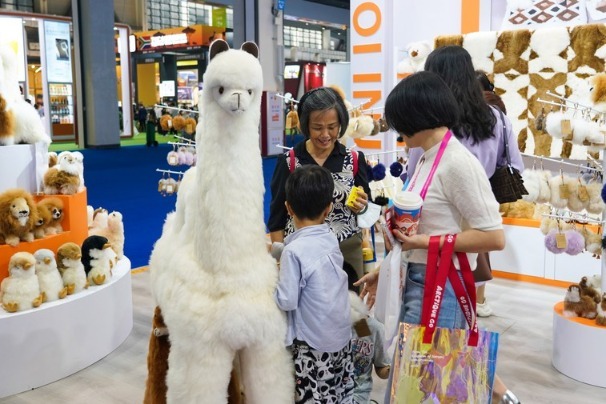Cross-border trade in services gets fillip


Nation to further push liberalization and higher-level opening-up
China has been proactively advancing the completion and release of a negative list for cross-border trade in services in the pilot free trade zones, the Ministry of Commerce said on Thursday.
The aim is to conduct stress tests for the further opening-up of cross-border trade in services through pilot works covering more places, the MOC said.
"The move targets further promoting liberalization of services trade and higher-level institutional opening-up," said Shu Jueting, spokeswoman of the ministry, at a news conference in Beijing.
A negative list refers to special administrative measures for access of foreign investors to specific fields as stipulated. China introduced a negative list for cross-border trade in services at the Hainan Free Trade Port earlier this year.
On Nov 4, President Xi Jinping said via video link at the opening ceremony of the fourth China International Import Expo and the Hongqiao International Economic Forum that China will conduct stress tests for high-standard opening-up in pilot free trade zones and the Hainan FTP, and will release a negative list for cross-border trade in services in the pilot free trade zones.
The nation's services trade has been growing fast this year, and Shu attributed that to China's continuous opening-up, the stable recovery of the services sector and digitalization in services trade.
In the first three quarters of this year, China's trade in services was worth 3.78 trillion yuan ($590 billion), up 11.6 percent year-on-year.
Services exports surged by 27.3 percent year-on-year to 1.78 trillion yuan, while imports increased by 0.5 percent year-on-year to 2 trillion yuan, registering a positive growth for the first time since the outbreak of COVID-19.
A series of policies and measures, like the progress in pilot works for innovation and development of trade in services, and the implementation of a negative list on cross-border services trade in Hainan FTP, have been injecting new impetus into trade in services, Shu said.
"Among the 12 subsectors of services trade, seven have registered growth rates higher than 10 percent during the first nine months, which offset the negative impact from the decline in tourism services imports, to shore up the growth in overall services imports," she said.
Zhou Mi, a senior researcher at the Chinese Academy of International Trade and Economic Cooperation, said the rapid development of the digital economy, the facilitation measures for digital economic cooperation in international agreements and the upgrades in some of China's manufacturing sectors to provide manufacturing-related services, have all created new dynamics in China's trade in services, helping it to grow fast.




